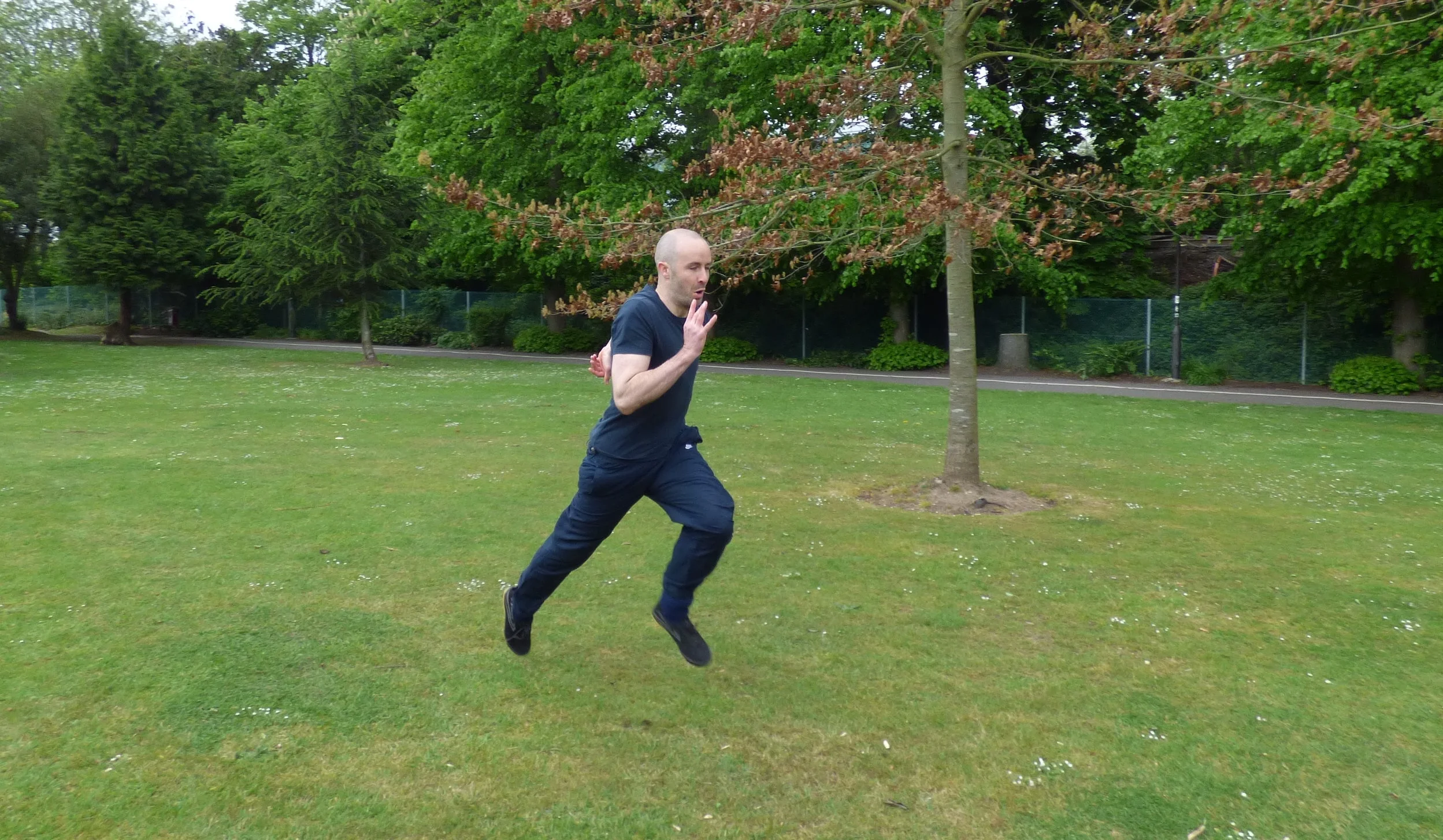Sprinting is one of the most dynamic and explosive forms of exercise which synergistically strengthens all the muscles and connective tissues in the foot, lower leg, upper leg and hips whilst providing an intense cardiovascular workout.
There is no doubt sprinting is effective. But is it dangerous?
Context matters here.
Biomechanically sprinting is a sound movement, perfectly aligned with what our muscles and joints are designed to do (which is more than can be said for many popular training exercises.)
But there are significant forces at play magnified by the speed of the movement. Furthermore sprinting will accelerate your heart rate like nothing else! For folks who are a) out of shape b) unused to sprinting c) tight and immobile plunging straight back into a full-blooded sprint workout is an injury waiting to happen!
This doesn’t mean you should give up on the idea of sprinting. I strongly believe it’s a skill we should all try to maintain for as many as years as possible (and it’s a real shame modern lifestyles erode our abilities so early) but you need to ease back into it slowly.
Here are some tips to get you started:
Get Stronger - Add some horsepower to your lower body muscles with resistance exercises. Squats, lunges, split squats, isometric holds etc. At some point you will still need to practice and condition your muscles to the art and skill of sprinting but in the short-term controlled (and progressive) resistance exercises will give you a greater reservoir of strength to safely handle the forces involved.
Daily Mobility - Performing the perfect splits is not necessary but introducing some daily mobility work to restore range of motion to your muscles and joints will enhance your resilience to injuries during all types of workouts. Sprints included.
Start Slow - Don’t try to set a land-speed-record during your first sprint in a decade. Or even your second, third and fourth. Torn hamstrings and popped calves are thoroughly unpleasant injuries. Ease into it with a steady increase in speed over time. 70% for a few weeks, 80% for a few weeks etc.
Run Uphill - Not only does the introduction of a gradient increase the metabolic demands of a sprint workout, it also reduces the impact forces on your joints and reduces the likelihood of muscle strains as the hill applies a natural set of brakes to your body.
Once you are sprint ready, don’t overdo it. As a bang-for-your-buck workout few things can compete but too much, too often becomes completely counterproductive. Most of us are not trying to win the Olympics! Individual mileage will vary but I’ve found 1-2 bouts of sprinting per week to be plenty.
Conclusion: Sprinting is a fundamental (and fun) skill we should all want to practice and maintain for as many years as possible. Furthermore it has the potential to deliver a host of performance and health benefits. But safely performing these workouts is a use it or lose it deal. Approach with common-sense and caution if you haven’t sprinted in a while.

